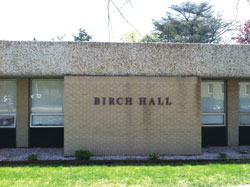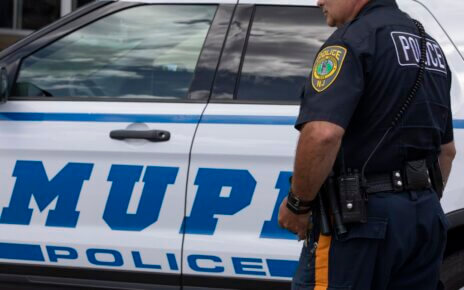A small amount of asbestos was found behind Birch Hall this past Wednesday, April 24. The substance was quickly identified and removed when a University groundskeeper discovered it upon his rounds.
According to a memorandum sent out by the Vice President of Administrative Services, Patti Swannack, the groundskeeper immediately notified the Director of Compliance, Mel Dale.
Asbestos, a naturally occurring mineral with fibrous crystals, was commonly utilized in buildings in the late nineteenth century. Professor Claire Condie, a geology adjunct, states that “Because of its resistance to heat, fire, and chemical damage, [it] was used for insulation in buildings and as [an] ingredient in a number of products, such as roofing shingles and water supply lines. Typically the asbestos is [also] mixed with cement or woven into fabric or mats.”
Dale states that since the relative bans on asbestos containing material (ACM) took effect, the University has not used any in recent building materials since; which explains the asbestos finding in Howard Hall last fall.
However, there is some asbestos remaining in older buildings, said Dale, but the amount is minimal and catalogued through the school’s Asbestos Management Plan. “All the remaining amounts of asbestos are inventoried as to their current condition so as to not pose any danger to the University students and employees,” said Dale.
Condie explained that the most common form of asbestos is chrysotile, a member of a family of sheet silicates labeled as serpentine, which often grow in rocks that have an abundance of magnesium along with silica and a source of water.
Freshman Carolyn Kutz, communication major and Elmwood Hall resident, worries about the asbestos finding being so close to her home on campus. “It’s crazy that it could happen on campus, but the fact that it’s so close to where I sleep makes it a little more scary,” said Kutz. “I felt unaware and now wonder where else it could be on campus, or in a building on campus for that matter.”
It’s not a secret that asbestos health hazards are prime concerns, seeing as that all forms of asbestos are carcinogenic to humans. The World Health Organization (WHO) said that the material is a common cause for health risks such as lung cancer, including mesothelioma, a form of cancer that takes place in the lining of the body’s internal organs.
Sophomore Jasmine Fennal, chemistry major, is familiar with the effects of asbestos and notes that people are often exposed to it by breathing alone. “I know that the fibers can be released into the air when disturbed, like being hit, or loosened when it’s in use. It’s usually put into the air by demolition and construction,” said Fennal.
Because of these large health risks, testing was done post-discovery, confirming that the material was asbestos. Afterward, Swannack writes in the memorandum, “The asbestos material that was found was not removed from a University building. It is not known where the material came from. A complete remediation of the site will remove all of the material from the area,” and, “no one has been put in danger by this material being present and all necessary precautions have and will be taken.”
Minimal traces of asbestos were found within the soil behind the building and it was removed by an outside organization in compliance with all Occupational Safety and Health Administration (OSHA) and Environmental Protection Agency (EPA) standards, says Dale.
As a result of the finding, according to Dale, the University is working diligently to identify the source in this instance and is also updating the school’s Asbestos Management Plan as needed.
PHOTO COURTESY of Alyssa Gray



